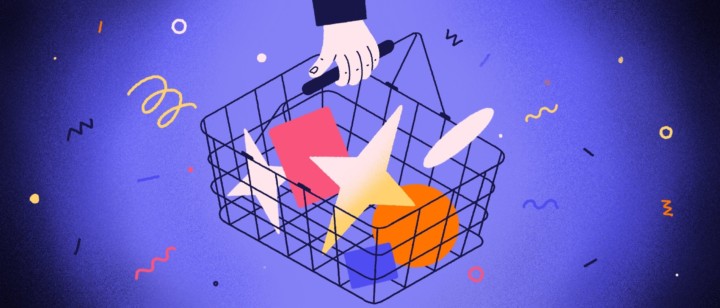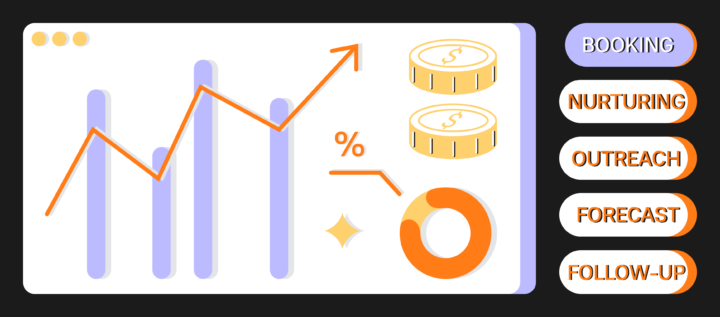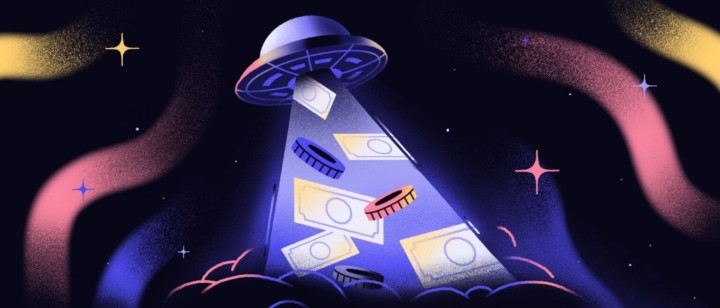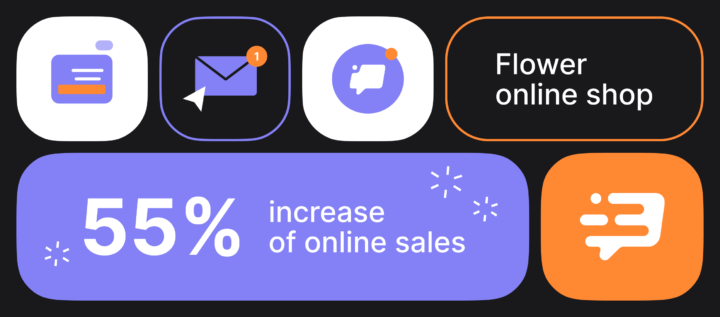Build Ideal Customer Profile Like a Pro Even If You’re Not [3 Templates]
![Build Ideal Customer Profile Like a Pro Even If You’re Not [3 Templates]](https://www.dashly.io/blog/wp-content/uploads/2021/03/ideal-customer-profile-4-1440x616.jpg)
A Time Master, that’s how co-workers used to call Emma. Last year her passion for controlling work-life balance grew into a fast-growing startup on project management. That is why it’s so weird to see this woman fighting a clock now.
As a CEO, Emma must take an important decision about the long-awaited product launch time. On the one hand, the never sleeping competitors like Asana, Trello, Favro, Gather Content are trying to get ahead of her at every market trend. However, there is a low quality leads problem impeding sales of the current product.
Marketers predict the same fate for a new one if there is no updated audience’s knowledge to develop this new product. They offer to build an Ideal Customer Profile. It needs research, which means time Emma doesn’t have.
But she has buyer personas ready.
So, whether an Ideal Customer Profile development is worth that time and money? What ICP is, and why the buyer persona isn’t enough to develop and sell products today? The best experts in marketing and Dashly chatbot platform PMMs, Marketers, Sales shared their experience on these questions in the article.
Let’s dive in!
What’s an Ideal Customer Profile?
Let’s start with the beginning. I mean the data Emma’s team already has — buyer personas.
Buyer persona — a fictional character embodies the company’s target audience’s demographic details, interests, and behavioral traits.
They are Mike and Jane:
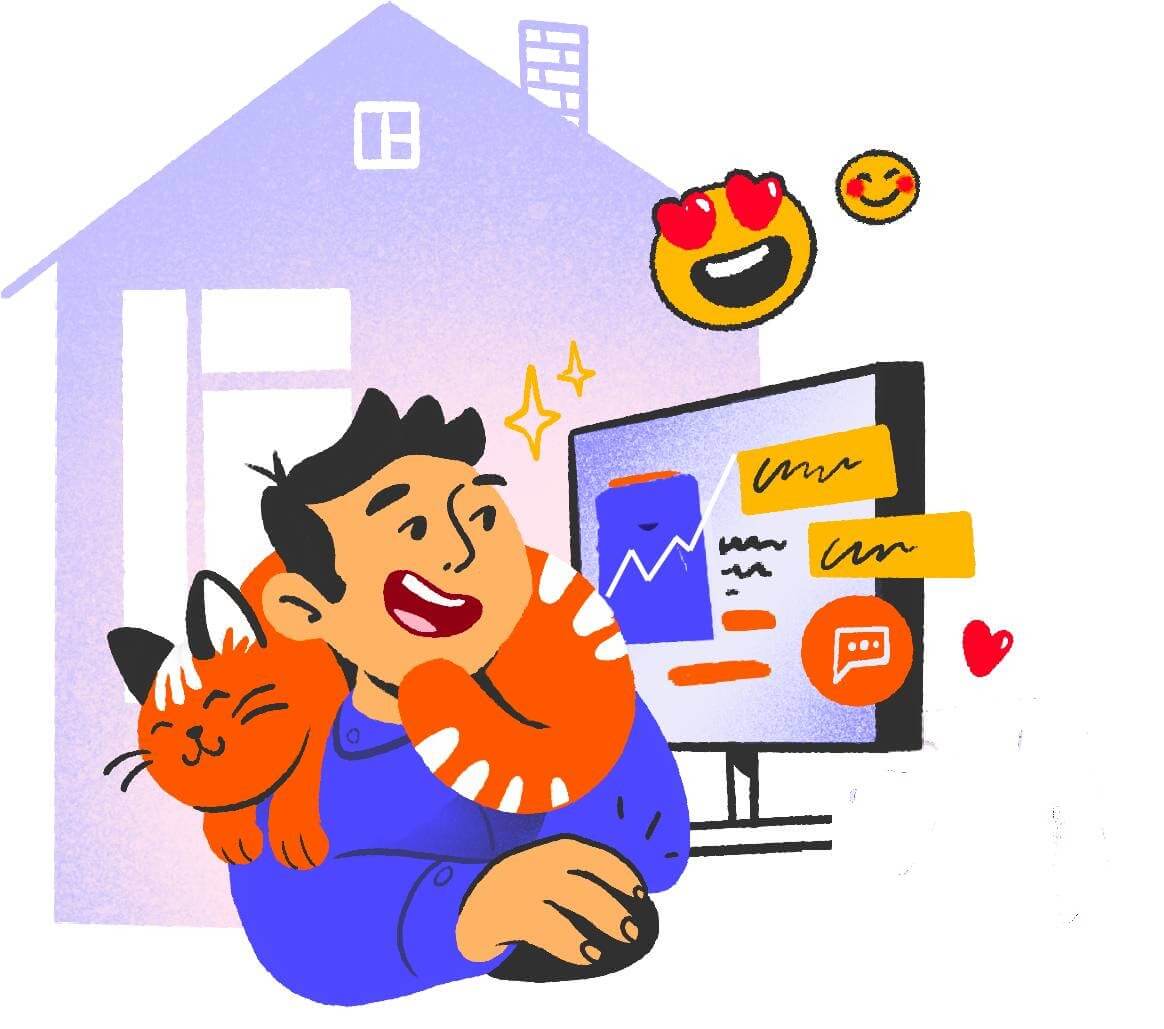
CEO of a startup project
Mike wants to unite and track the success of small team activities across a business goal.
Reasons to buy:
- Being in trend,
- Growth of the product as well as the number of the tasks,
- Team growth.
Job stories:
- Track the project progress as well as the deadline Improve teamwork over an idea, so they can comment on the tasks to update progress.
- Prioritize bugs and features.

Marketer in SaaS company
Jane is willing to manage the tasks of the big marketing team: time, reports, planning.
Reasons to buy:
- Team growth,
- The need to visualize tasks for better processes management and prioritization.
Job stories:
- To share and store valuable documents in a one place
- Not to lost tasks.
- PrioritizeTo-do list of daily task and assigning particular task to specific user.
Read also: 👉 How to use lead generation chatbot for your website
How is it different from an ICP? When the buyer persona is about HOW to communicate and sell to an individual. ICP defines WHOM to communicate. I mean its qualities will help you find out what is “high-quality leads” to your company, whom to target.
Ideal Customer Profile (ICP) is a set of attributes characterizing a company that would realize the most value from your solution or product.
I mean, ICP isn’t about pains and tasks an individual can solve with your product. It is a company level notion that includes:
- Company size or How many employees does it have?
- Industry defines the specific vertical you want to work within.
- Revenue/Budget influences your pricing model and tariffs.
- Geography. Do you sell to a particular region? Does it require localization, Security compliance?
- Job titles/Functions. They indicate users of your product.
- What technologies does a company use? With this info, her team can define whether they can offer the product as complementary or not.
- Website traffic.
- What is their customer base? These together with previous can impact your pricing.

You don’t have to include them all. At the same time, it is far from the end of an ideal customer profile characteristics.
Read also:
- Attract customers with these 24 ecommerce lead magnets
- The 7 Key Email Marketing Metrics & KPIs You Should Be Tracking
- Product adoption: 7 tips to prove your value
Why is building an ideal customer profile so important?
For many years Emma’s product used to be a “one size fits all” vendor. That means targeting a broad audience, increasing support load, extended sales cycle, diluted message, and positioning.
The ideal customer profile helps to focus on quality leads. By using it, you’ll create a hyper-targeted list of prospects that are an excellent fit for the product and:
- Save a lot of time and money.
- Increase your customer lifetime value and prevent them from churning.
- Make customers happy that will result in positive word of mouth and more referrals.
It doesn’t mean you don’t need Buyer Personas. Ideal Customer Profile and Buyer Personas work together: marketing, sales, and support teams are focused on high-quality leads and ready to answer their questions.
Sounds pretty good, right? That’s what Emma thought when she agreed to delay the product paunch and create an ICP.
How To Create An Ideal Customer Profile
#1 Define a market segment
There is a typical mistake in the first step when businesses start analyzing data in a CRM. Doing this without a defined market segment leads to a universal customer avatar and back to the “one-size-fits-all” approach.
There should be a standalone ICP for every market segment. For example, startups, SaaS, EdTech, etc. There are segments Emma’s team chose.
#2 Select four key customers from each market segment
4% of customers might generate 64% of your revenue.
That’s Pareto Principle and how Perry Marshall has taken it to the next level. He found that the Pareto Principle is exponential! Let me explain. We already know that 20% of your customers represent 80% of your revenues. What Marshall found is that, within that initial 20%, the 80/20 rule also exists. Meaning that the top 20% of the top 20% of your customers (or the top 4% overall) represent 64% of your sales (calculated as 80% times 80%)
So, find your 4% to use them in an Ideal Customer Profile. But who said it is a limit. Thus, Emma’s team selected the ten best clients from each segment. There are the most loyal accounts with the highest LTV resulting from the use of her product.
Interview the key people in your company about these customers.
There is a list of questions Emma asked her team in terms of ideal customer profile, perfect for B2B as well as for B2C segment:
- What is the MAIN reason potential customers mention when don’t purchase?
- What is the critical factor that convinces them to buy?
- What is the goal they want to achive when buying our product?
- How do they achieve it with our product?
- What is their purchase process?
Read also:
- 10 best customer engagement strategies
- Client onboarding: how to engage, retain, and win users
- Customer engagement strategy: a complete guide to winning prospects in 2023
- What customer engagement platform is best for your business? 15 options to choose.
#3 Collect info about your buying committee members
Buying committee are people who decide on a purchase of your product.
Knowledge of who these people are will help you to be ready for possible concerns, objections. The answers to it, you’ll include the value proposition.
For example, the decision to buy Emma’s product comes from a CMO. But there is a CEO who approves the payment. With this info, you understand the additional questions that may occur and present the best fit value.
SO, who are these people?
- Talk to sales. Ask about the team members whom decision-makers mention during the talk. Who joined the meetings from the client’s team?
- Check CRM. Who was in the email thread? Look for replies and CC.
- When you know their names, find them on socials and note their age, job roles, topics they share posts about, what communities they are in, influencers they follow.
Whether a company needs to focus on interviewing current customers or someone who isn’t yet a customer?
In a perfect world, a company learns from both potential and current customers. It is a good idea to start research with existing customers if you have them. When it comes to customer lifetime value (CLV) vs. customer acquisition cost (CAC) ratio, focus on the most profitable segments.
#4 Analyze buying process in a customer company
It means how an ideal customer profile buys your product. For example, two scenarios:
- The short purchase authorization cycle. For example, among Emma’s customers, there are small startup companies. When buying her monthly service subscription, a CMO comes to the CEO and says, “I need this tool. It costs $40 per month”. The last one agrees and gives him a credit card to pay. Easy.
- The long purchase authorization cycle. For example, to agree on annual Emma’s service subscription purchase in an enterprise-level company, a CMO initiates a tender process. The team works over vendors’ profiles to present them to a committee. The last one considers a proposal, compares it, chooses the best. And only then the purchase approves.
It’s far from the end and depends on the company profile. You should analyze these processes in your best customer companies. Find similar scenarios, and add them to your Ideal Customer Profile right after the buying committee.
Who should work over the ideal customer profile?
It is a collective effort of the Marketing, Sales, Customer Support, and Product Analytics teams.
Read more
- 10 Best Live Chat Software for Customer Support
- 10 Best Customer Service Chatbot Platforms to Level Up the Work
- How to create a user journey online map for your online school students [4 free templates]
- Increase Customer Support Efficiency With 15 Best Knowledge Base Tools
- Chatbot Guide: What can a chatbot do for your customers 24/7
#5 Research your best customers
Reveal their experience with a product. What do the best of your customers like about the service and what to improve?
There are four methods Emma’s team did this:
- Face-to-face interviews or video conferences. In addition to the verbal info, respondents share you’ll be able to read their facial expressions. Thus, you understand how your customers feel and think.
- Quantitative survey. You’ll save customers time because answering questions is a couple of minutes when a call is fifteen-twenty minutes. But the survey is about topics that you already know about, and it is hard to uncover new information with this method.
- Analyze the products, its features, setting your best customers to use most of all. Focus on the actions the majority of them do. It will help to improve your onboarding process and repeat this scenario with new users.
What questions to ask?
Interviewing potential customers for an Ideal customer profile in B2B segment Emma used the following questions:
- What is your role
- How big is the team? Sales team?
- What is your company revenue?
- How many customers do you have?
- Can you describe the way your team collaborates on tasks?
- How do you track team progress over the task?
- Are you happy with the task management process now? Why?
- How do you store valuable data from your project?
- Describe the last time you had difficulties with task management
- DM — Who was responsible for that area?
- Describe the perfect solution to this problem
We’ve send the template link to your email address
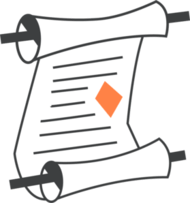
You can rarely ask all the questions during a first call. To collect more info for your ideal customer profile during a B2B interview, categorize and prioritize your interview questions to reflect the critical characteristics of the ICP we mentioned before.
Pay attention to both positive and negative feedback. The last one can provide you with valuable insights on improving your product and buyer journey.
How many customer interviews are enough?
Five, thirteen, forty. There is no exact number here. If we’ll say fifteen, and each of the respondents replies differently, it is nothing. The interview is about finding some connections, common behavioral patterns, for example based on user tracking on website. When you see them repeating from interview to interview, that is a value we are looking for. When the number of these patterns reaches at least 40% of respondents you’ve interviewed, consider the goal is achieved.
The less you know about the industry, the more conversations you need to have.
Add all the data you have from the specific market segment into an ideal customer profile template you chose.
There are some ICP template examples for you from Emma?
Read also:
👉 Capture emails from website visitors with Pop-ups
👉 The best way to collect emails we tested this year
👉 Lead nurturing platform for your revenue growth
👉 12 types of marketing nurture campaigns
When is the best time to start work over an ideal customer profile, before a product development or after?
It depends on whether you’re a B2b or B2c Model. That said, in the B2C space, I typically see the most successful businesses conduct research to formulate a ICP / hypothesis before launch, and then use data to better understand their customer and make adjustments to their ICP accordingly
Every day!
Your customer avatar is not fixed and constantly changing, as customer needs and desires change. But typically, B2B businesses research to formulate an ICP / hypothesis before launch and then use data to understand their customer better and make adjustments to their ICP accordingly.
I have been working on a supplement project with a target customer group of older people between 55-65, mainly women.
After enough data in Google Analytics, I saw that the project had to target groups, the defined one and a much younger male target group, which was also attracted by that product, which I didn’t know before. Hence, we made some adjustments to cover the younger group better as well.
Long story short: I would recommend doing the following:
- Do some intense research about your target customer and, in the best case, ask them already, maybe in a pre-market launch.
- Launch the product and collect data.
- Verify whether the defined customer corresponds with the data. If not, make adjustments.
Let’s back to our Emma. Finally, her team had the first ideal customer profile. But previously, they chose several templates to build it — a good source for your inspiration.
Read also: how to find respondents for a survey or customer interview
3 Ideal Customer Profile Template Examples
Basic Ideal Customer Profile Template
| ICP Characteristics | |
| Location | |
| Size | |
| Industry | |
| Three examples of your happiestexisting customers | |
| Describe the shared characteristics of these accounts (in three sentences) | |
| What customers do they have, and in what segment? | |
| What relevant technologies do they use? | |
| What happened within these companies right before they signed a deal with you? | |
| What pain points can you solve? |
Ideal Customer Profile + Buyer Persona B2B Template for SaaS segment
| Demographics | Age: Role: Success at work measured by: Socials and groups: Goal: | |
| Company | Number of employees: Industry: Customer base: | |
| Business goals | Goal 1 Goal 2 Goal 3 | |
| Price sensitivity | Company budget for this type of product: Ideal price range: | |
| Pain points | Main challenge: A tool that currently is used: It costs a company: Who does solve this problem? | |
| Common objections | Objection 1 Objection 2 Objection 3 | |
| Decision factors and process | Most likely to find out about our product from: Who is involved in the purchase process? Product alternatives considered: Most common pricing plan: | |
| Product usage | Features in daily use: Has some trouble learning how to use Most attracted to Overage use of ROI from [product] |
Ideal Customer Profile + Buyer Persona Template for B2C segment
| Demographics | Age: Civil status: Work: Monthly income: | |
| Online behavior | Favorite socials: Searches for necessary services with: | |
| Hopes and goals | Goal 1, 2, 3 | |
| Price sensitivity | Budget: Ideal price range: | $XXXXXXX $XXX to $XXX |
| Pain points | Main challenge: Worries about: | |
| Common objections | Wants to avoid… | Objection 1, 2, 3 |
| Decision factors and process | Most likely to find out about our services from Enters the pipeline by Who makes the purchase decision | Source 1, 2, 3 |
| Product/Service usage | Likes Impressed by a product feature or characteristic Normally gets a | Feature 1, 2, 3 XXX% ROI |
All this info we collected and organized in a handy Ideal Customer Profile Worksheet. It will guide and save you time during ICP research and creation: guide on each step of customer research with pre-defined fields to fill info.
We’ve send the template link to your email address

Schedule a time to have your marketing, sales, and customer success teams sit down and go through the worksheet together. Thus, each team member will be on the same page about your ICP with this ideal client profile template.
How many ICP can a company have?
The sky’s the limit! But let us be guided by common sense, preferably the Pareto principle. I mean emphasizing the linkages among 40% of your best customers, defining segments, and concentrating on the ideal ones.
The alternative is to rely on a number of products in a company. For example, each of the five products can have its ICP. Thus, a company will have five different ideal customer profiles.
ICP isn’t a thesis to gather dust on the shelves. Let it work for you!
Read also: The North Star Metric and How Can This Lead to Success
How to use an ideal customer profile in marketing
When Emma’s team has sharpened the company focus, they developed a strategy to attract the most valuable customers.
- Ads targeting. Based on the interests of the ideal customer profile, they created placement-based audiences and custom affinity audiences.
- Pricing. Emma’s ideal customer has a stable ROI and likes to use the service for a long time. Thus, along with the monthly based subscription, she added an ability to pay annually.
- Lead scoring. With a new target on large companies, Emma launched a leadbot on her website. In a small conversation with visitors, Leadbot asks about a minimum revenue threshold and employees’ number.
Read also: Find out the best Intercom alternatives and Drift alternative
- Message. All the landings of Emma’s product were updated according to the pains and interests of the ICP. Moreover, they crafted their messaging according to ICP and Buyer Personas.
- Account-based marketing — the ICP soulmate. The ABM provides highly targeted, personalized campaigns based on an account’s perfect-fit characteristics (revenue, industry, technological maturity, geography).
- Partnership. The idea is to work with brands who aren’t your competitor and have a similar ideal customer profile. I mean joint events, webinars, content projects. For example, Emma’s task management tool reps were speakers at a webinar from an appointment scheduling software team. Thus, they reached the right people with less effort.
How to use an ideal customer profile in sales
- Prospecting is the first field of ICP usage in sales. With its help, sales reps look for new clients who are more prone to close the deal. For example, in Emma’s case, companies with 60-100 employees use Notion and Slack for team collaboration and buy her product better than others. Sales reps use these parameters when searching for new prospects. An ideal customer profile helps them to focus.
- Lead qualification. When working with incoming leads, we use ICP to prioritize them and focus on those who match the ideal customer profile characteristics. Qualification can be in the form of interviewing or automatic with the help of leadbot and CRM. The last one is based on the lead scoring system, where each match with the ICP parameter gives a customer some points. When the lead gets the needed score, it assigns to the sales reps a high priority one.
Read also: The qualification guide: how marketers can pass qualified leads on to sales
- Script and sales presentation. Include ideal customer profile problems, objections, and jobs into your sales presentations and scripts. Mentioning the most common scenarios and issues during a talk saves time and brings you closer to the moment when potential customers catch the product value.
How to use an ideal customer profile in product development
- Features prioritization framework. Knowing your best customers’ problems will help you improve relevant product features for their faster solution. For example, the CEO wants to automate task tracking within a company. Thus, a task about a new feature automatically displays or moves to the marketing workspace if somebody from the dev team assigns a relevant tag to this task card. For Emma’s ICP, this problem is excruciating. So, her dev team will assign this feature development the highest priority in a backlog.
It is about prioritization in favor of the features that match your ideal customer profile. - Onboarding. When you know the ideal customer behavior on each step of product onboarding, it is easy to improve this process for other customers.
Read also: How You Can Boost B2B Sales: Tricks You May Not Know
- Building product roadmaps. Identification of the ICP helps to understand what problems a product should solve. Since the ICP changes, you correct the product roadmap accordingly.
What’s next?
There is nothing permanent in business and the ideal customer profile Emma’s team defined and implemented. It should refresh according to your company’s growth (your knowledge of the buyer). Yearly.
Read also:
- Customer VS Client — making the difference clear
- Why eCommerce and omnichannel are inseparable?
- How to qualify lead within sales and marketing teams
- Ultimate guide to inbound lead qualification in EdTech marketing
- How to Qualify and Collect More Leads with Lead Bot?
- How BANT sales process can help you get qualified SQL in 2022
- How to implement user tracking on website: guide, tactics, and tools
- Top 10 user activity monitoring tools: tracking features, price, cons and pros
- Acquisition funnel marketing: Grow customer conversions at each step of user journey
- Top 20 best website tracking tools for effective work with visitors
- Guide to sales funnel optimization: best tips, tools, and common pitfalls.







